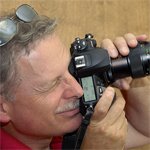Time lapse photography is very cool when you can actually see it all happening at one time. Apple's QuickTime Pro ($30) makes that possible by taking hundreds or thousands of individual images and sequence them together into a 'movie' of sorts. To do this, go to your Nikon's built-in intervalometer - Nikon calls it Interval Timer Photography (its menu is under the Camera icon on your Nikon DSLR body).
(D200 Users: On page 89 of the D200 manual, you get a simple directions and tips on camera positioning, using Manual vs. other modes, etc. that are likely to be the same or similar on other models.)
First, you set the Start to either Now or Start Time. 'Now' is immediate with a 3-second delay before the sequence begins. 'Start Time' can be set for hours and/or minutes according to the clock settings you have in place.
Second, you navigate to the Interval screen and set the time BETWEEN frames in hours/minutes/seconds. (see Step 4 calculation)
Third, you set the Select Intvl* Shots menu to record the number of shots X the quantity of each frame (for bracketing) = Total Number of Shots recorded. (see Step 4 calculation)
The Start Menu will let you initiate the sequence by selecting On and pressing the Enter button on your D200 body. Upon completion, copy files to your computer and use QuickTime Pro or another popular video editor to combine your images into a streaming presentation. Then upload to your web host for distribution. That's it!
Intervalometer Setup
Let's use a sample scenario that will last about two hours - a mountain scene, ball game, or similar situation. Here are the basic steps to determine the intervalometer settigs you will use.
1) Convert hours into minutes: 2 hours = 120 minutes
2) Determine total number of seconds: 120 X 60 = 7200 seconds
3) Determine time length of finished sequence: 300 seconds(at 30 fps)= 10 seconds of playback.
Use these fps rates to calculate:
U.S. TV Video: 30 fps
European Video: 24 fps
High Definition Video: 24 fps
4) Interval Rate: 7200 seconds of sequence divided by 300 final sequence frames = 24-second intervals for a 2-hour recording
Calculate a few scenarios ahead of time and you'll be ready to setup and shoot with no delays.
Tips
- For unattended sessions, use a tripod. If outdoors, secure your tripod well to prevent wind from knocking it over, protect from rain, etc.
- Prefocus to avoid inaccurate or random AF operation
- Use WB Preset and shoot in Manual Mode to maintain a consistent exposure - or leave in P, S or A for continuous metering during changing light conditions
- Use a fresh battery and a blank CF card to avoid running out or power or memory
- Have fun!
I'll report on the postprocessing and QuickTime conversion portion of this process when I receive the latest QT version from Apple...
Mule
Tuesday, September 11, 2007
Subscribe to:
Post Comments (Atom)



No comments:
Post a Comment